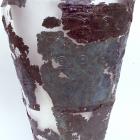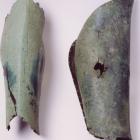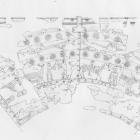First Tomb of a Warrior, Sesto Calende
First Tomb of a Warrior, Sesto Calende (Varese), late 7th century BC
The so-called First Tomb of the Warrior was discovered accidentally in March 1867 by a farmer ploughing his field. Almost two meters long, the tomb was covered by an approximately one and a half meter thick tumulus of cobbles. Due to the considerable value of the grave goods, it is assumed that the tomb belonged to a high ranking individual. These artifacts include parts of a chariot, such as the iron rims that were fixed to the wooden wheels, a pair of bits and a horse’s harness. The chariot, of Greek origin, is often found in the princely tombs of Piceno and Etruria and demonstrates how the ruling classes of Golasecca appropriated the symbols of power typical of other cultures. Indeed, among the grave goods were also a helmet in bronze, of the type found in Piceno, Slovenia and the Veneto; a short iron sword, as used in Switzerland, Eastern France and southwestern Germany; the head of an iron spear and a pair of archaic Greek anatomically shaped greaves in bronze sheet, probably imported from Etruria.
The highly varied origin of the objects is probably due to the custom of ceremonial gift giving among leaders of the various communities. The tomb also contained an embossed bronze sheet situla decorated with figurative motifs and fragments of a funerary urn.










